Businesses rely on a wide selection of SaaS applications to power their operations. But with this abundance of tools, the need to seamlessly integrate them has become paramount.
How can you, as a SaaS company, provide your customers with a strong integration experience? Build an integration marketplace, a one-stop shop for your customers to discover, configure, and manage the integrations they need, all within your app.
In doing so your customers could easily access a wide range of third-party integrations, tailored to their specific business needs, without the hassle of managing multiple APIs and workflows.
Key Takeaways:
- An integration marketplace provides a one-stop destination for your customers to discover, configure, and manage the integrations they need within your SaaS application.
- Offering an integration marketplace can open new revenue streams, enhance your user experience, and give you a competitive advantage in the SaaS market.
- Building a successful integration marketplace requires a user-friendly interface, strong search and filter options, and comprehensive API documentation to support your partners and developers.
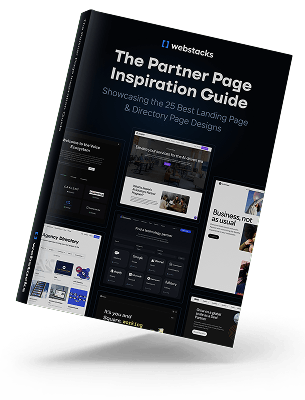
What is an Integration Marketplace?
Similar to a partner marketplace, an integration marketplace is a platform that allows you to showcase and provide access to the different SaaS tools and apps your business can integrate with.
It's similar to a traditional marketplace, but instead of physical products, it's all about the digital integrations your customers can leverage to enhance their experience with your product.
Who Should Have Integration Marketplaces?
If your customers are asking for integrations with dozens of apps, providing them with a single place to discover, launch, and manage those integrations can be a game-changer.
Let's look at a few of the most common use cases for an integrations marketplace.
1. SaaS Platforms with Expanding Ecosystems
SaaS companies that offer a broad range of services or cater to multiple verticals need integration marketplaces to help users connect their favorite tools, adding value to the platform and increasing stickiness.
- Examples: Project management tools, marketing automation platforms, e-commerce platforms
2. Enterprise Solutions with Complex Workflows
Enterprise clients often rely on a variety of tools to manage different aspects of their operations. An integration marketplace helps streamline these workflows by enabling easy connectivity between tools, making it a critical feature for enterprise-focused platforms.
- Examples: ERP systems, CRM platforms, financial management tools
3. Developer-Centric Platforms
Developer platforms or tools focused on extensibility need integration marketplaces to allow users to build, customize, and extend functionality through APIs and third-party tools, enabling innovation within the platform.
Examples: API management platforms, cloud infrastructure tools, CI/CD tools
4. Productivity & Collaboration Tools
Platforms designed to enhance productivity and collaboration benefit from integration marketplaces because users often require seamless access to a variety of other software to manage tasks, communications, and files more effectively.
- Examples: Communication tools, file-sharing apps, task management tools
Benefits of Hosting an Integration Marketplace
Hosting an integration marketplace can provide your business with a range of valuable benefits. From a branding and SaaS marketing perspective, it allows you to showcase your app's connectivity and position your company as a technology leader in your space.
Through offering the marketplace, you can enhance the user experience for your customers, giving them an easy way to discover, authenticate, and configure the integrations they need.
- 🚀 Boosts customer acquisition: Standing out in a crowded market and capturing the attention of potential customers is not easy. By expanding the number and variety of integrations available in your marketplace, prospects can easily understand more ways to leverage your product. Additionally, these integrations signal your product’s maturity and your team's dedication to continuous innovation.
- 💻 Enhanced User Experience: An integration marketplace gives your customers a centralized hub to identify which products integrate with you and access the apps and tools they rely on, streamlining the process of finding and integrating the necessary solutions. This self-serve approach allows users to take control of their app ecosystem, leading to a more engaging and efficient experience.
- 🥇 Competitive Advantage: An integration marketplace can give your business a distinct advantage. By making it easier for your customers to connect your app with the other tools they use, you can drive greater adoption and retention, ultimately strengthening your position in the industry.
- 📢 Branding and Marketing: Hosting an integration marketplace also allows you to showcase your app's versatility and connectivity, reinforcing your brand as a leading technology provider and the partnerships you have with other reputable brands.
Integrations can be a compelling SaaS marketing selling point, helping you attract new customers and solidify your reputation as a trusted, innovative solution in your industry.
Key Features of Successful Integration Marketplaces
Building a successful integration marketplace requires a keen focus on several essential features. Firstly, the user interface should be intuitive and user-friendly, making it effortless for customers to navigate and discover the integrations they need.
Strong search and filter options are also crucial, allowing users to efficiently sort through the available integrations based on their specific requirements.
Beyond the visual appeal and functionality, successful integration marketplaces also prioritize partner and developer support. Providing extensive resources and communication channels can empower your ecosystem to seamlessly develop and deploy new integrations.
Complementing this, comprehensive API documentation serves as a valuable guide, ensuring a smooth integration experience for all parties involved.
In addressing these core elements - a configurable marketplace UI, custom integration capabilities, and a supportive partner network - you can create an integration marketplace that truly delivers value and sets your platform apart from the competition.
Integration Marketplace Marketing Strategies
Once you've built your integration marketplace, it's time to focus on effective marketing strategies to drive awareness and adoption. Partnering with other SaaS providers can be a strategic way to reach new audiences and cross-promote your respective integration marketplaces.
Partner Collaborations
According to a report by Forbes, some brands are earning over 28% of their total company revenue through partnerships. Collaborating with partner companies can leverage their existing customer base and tap into new markets.
This could involve co-marketing initiatives, joint webinars, or co-selling arrangements that showcase the integrations available in your marketplace.
Content Marketing
Educating customers on the benefits of your integration marketplace through content marketing can be highly effective.
Consider creating blog posts, white papers, or webinars that highlight the value of leveraging the marketplace and the integrations they need to streamline their workflows.
Social Media Promotion
Actively promoting your integration marketplace on social media channels can help build awareness and credibility.
77% of businesses use social media to reach customers, share updates, success stories, and thought leadership content to engage with your target audience and drive traffic to your marketplace.
Customer Testimonials and Case Studies
Showcasing real-world success stories and customer testimonials can be a powerful way to build trust and demonstrate the value of your integration marketplace.
Develop case studies that highlight how customers have benefited from using the marketplace and the integrations it offers.
By implementing a multi-faceted marketing approach, you can maximize the visibility and impact of your integration marketplace and attract a growing number of customers and partners to your platform.
Integration Marketplace Examples
The best B2B SaaS websites have discovered the power of integration marketplaces to enhance their offerings and provide customers with a seamless experience.
These marketplaces showcase the various third-party applications that can seamlessly integrate with the core platforms, allowing customers to easily discover, authenticate, and configure the integrations they need.
1. Contentful
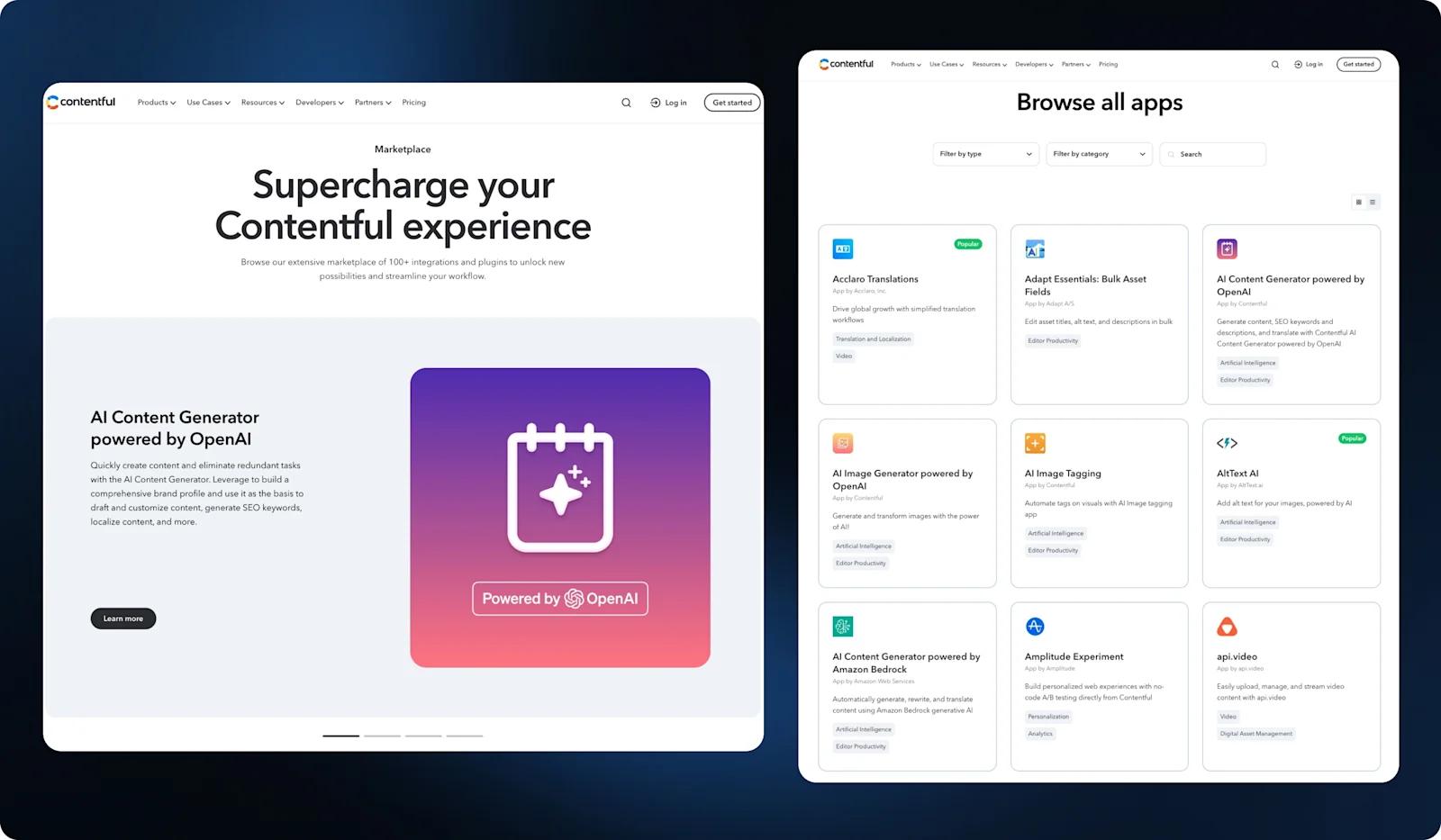
contentful integrations
Contentful, is an enterprise CMS platform that has built a successful integration marketplace that enables users to connect their CMS with a wide range of tools and services.
From e-commerce platforms to analytics tools, the Contentful marketplace offers a self-serve experience for customers to leverage the integrations they need.
2. Aircall
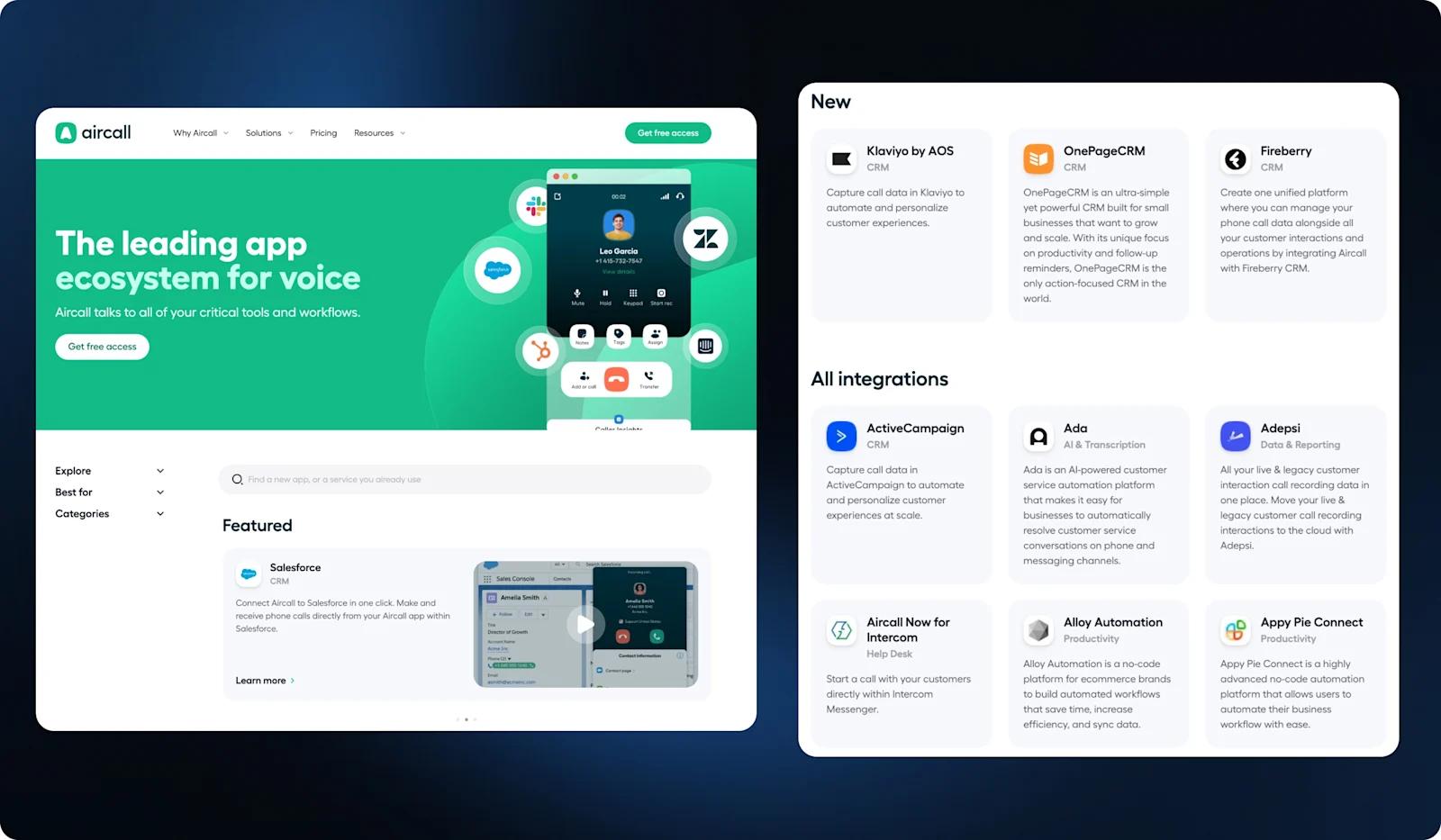
aircall integrations
Aircall, a cloud-based phone system provider, has also embraced the integration marketplace model. The Aircall marketplace allows users to connect their phone system with various business applications, such as customer relationship management (CRM) tools and helpdesk software, enhancing their productivity and workflow efficiency.
3. Miro
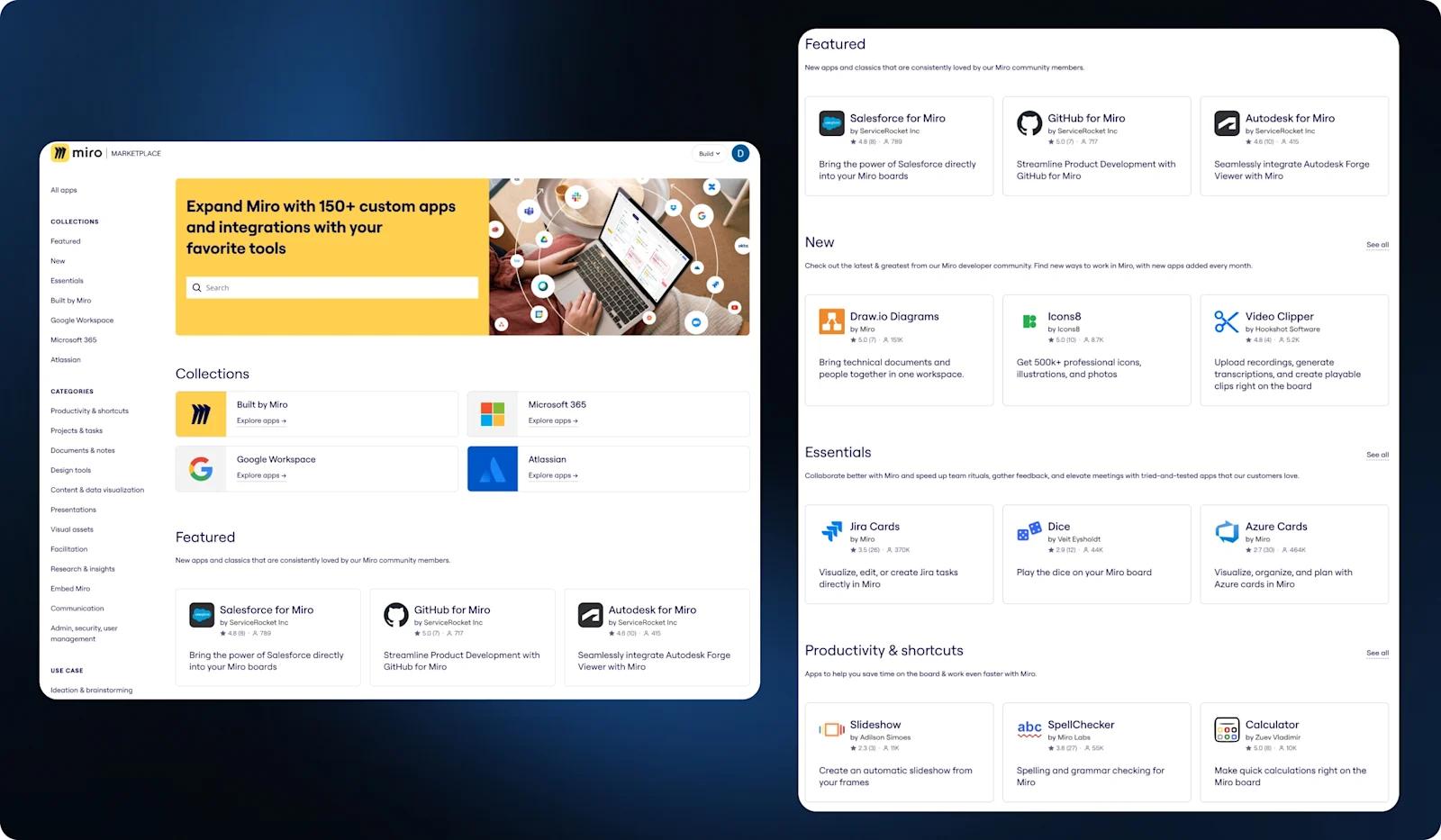
miro integrations
Miro, a visual collaboration platform, has built an integration marketplace that enables users to seamlessly integrate Miro with a wide range of productivity, project management, and communication tools.
This marketplace means customers can easily access and manage the integrations they need to enhance their visual collaboration experience.
4. Toggl
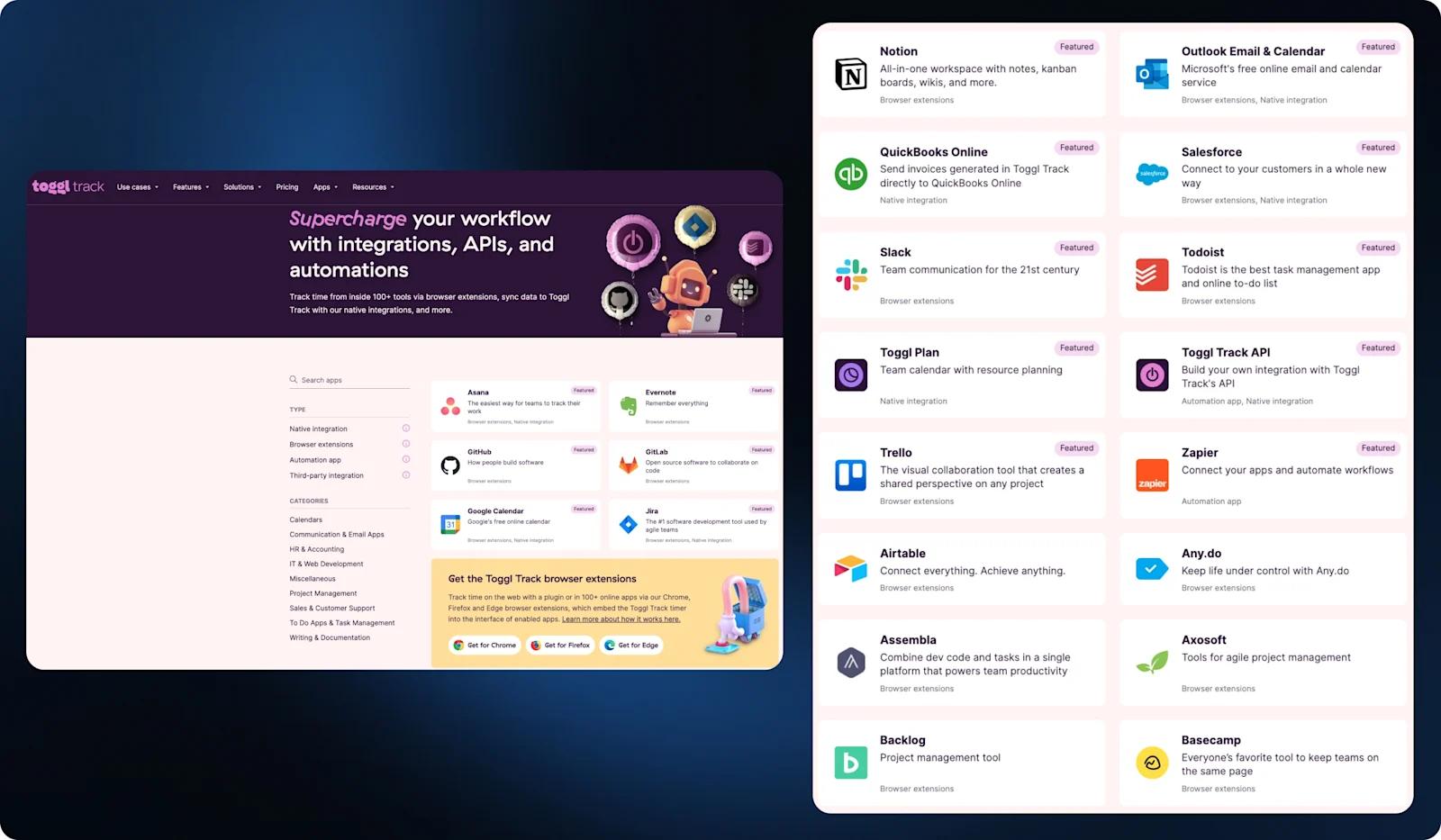
toggl integrations
Toggl, a time tracking and productivity app, has also leveraged the power of an integration marketplace. The Toggl marketplace allows users to connect their time tracking data with other business applications, such as project management software and accounting tools, streamlining their workflow and data management.
5. Retool
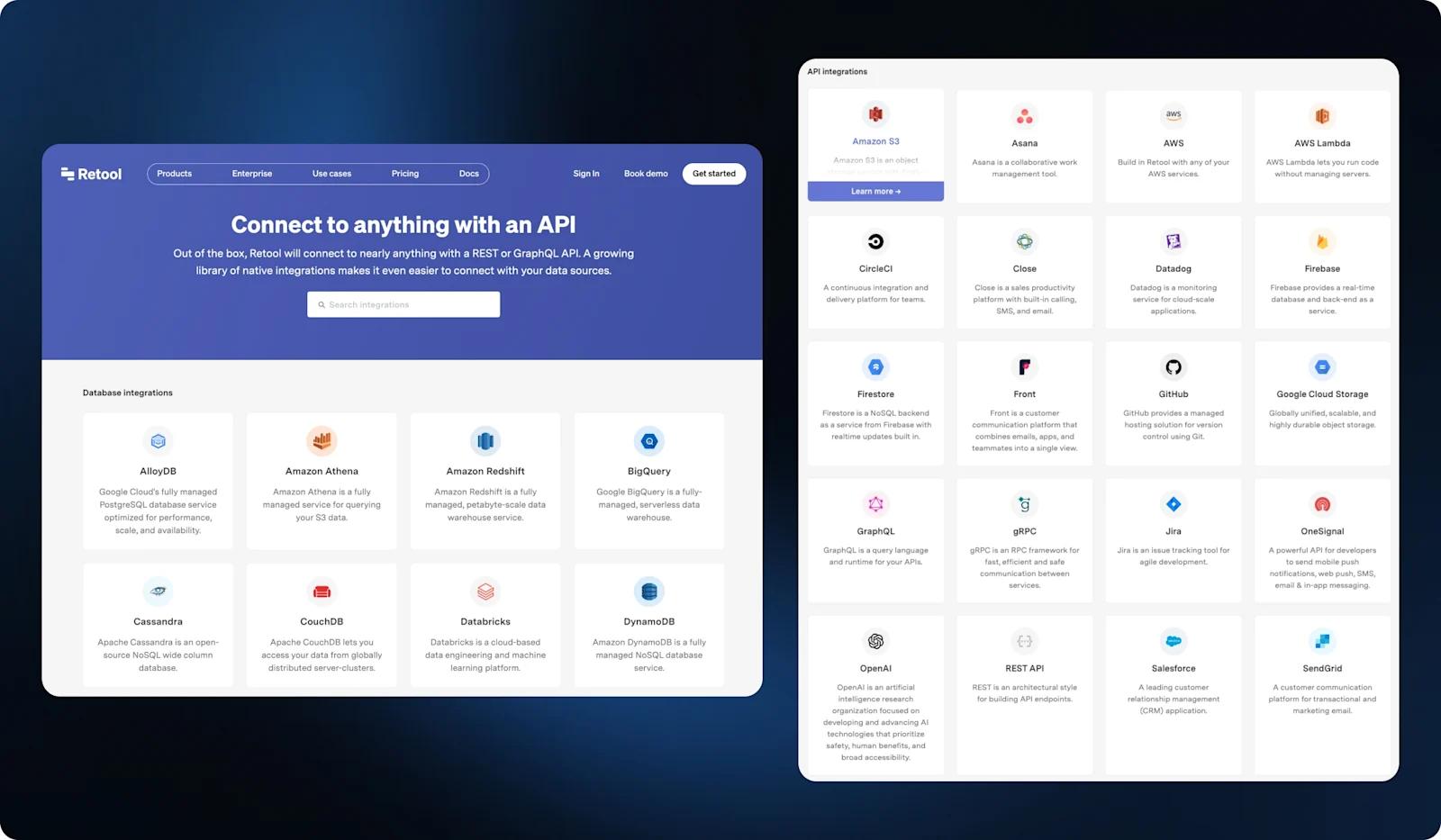
retool integrations
Retool, a low-code application development platform, has created an integration marketplace that enables users to connect Retool with various third-party services and APIs.
This marketplace also provides developers with the necessary tools and resources to build and publish their own custom integrations, further expanding the app ecosystem.

Measuring the Success of Your Integration Marketplace
To ensure your integration marketplace is effectively meeting customer needs and delivering value to your business, tracking detailed key performance indicators (KPIs) is essential.
Key Performance Indicators (KPIs)
Monitor specific metrics to gain insights into the performance of your marketplace:
- Number of Integrations Installed: Track how many times each integration is installed to gauge popularity and usefulness.
- Revenue Generated: Measure the revenue from integration-related offerings to assess financial impact.
- Customer Satisfaction: Evaluate the customer experience with the integration process through surveys, Net Promoter Scores (NPS), and user feedback.
Analyzing these KPIs provides a comprehensive understanding of your marketplace’s success. It allows you to pinpoint strengths and identify areas needing improvement. Data-driven organizations are 23 times more likely to acquire customers and six times more likely to retain them.
Customer Feedback and Satisfaction
Regularly collect and analyze feedback from both customers and integration partners. Use various methods:
- Surveys and Polls: Gather quantitative data on user satisfaction and pain points.
- User Interviews: Conduct qualitative interviews for in-depth insights.
- Online Reviews and Testimonials: Monitor public feedback to understand customer sentiment.
This feedback loop helps you make informed decisions to enhance the marketplace continuously.
Partner Engagement and Success
Engage with your integration partners to ensure their success and the marketplace's sustainability:
- Number of Integrations Published: Track how many integrations partners are contributing.
- Active Users: Measure user engagement with each integration.
- Revenue Generated: Assess the financial contribution of each partner's integrations.
These metrics help build strong partnerships and ensure a thriving marketplace ecosystem.
Continuous Improvement Based on Analytics
Use the collected data to drive continuous improvements:
- User Interface Enhancements: Refine the UI to make the marketplace more user-friendly.
- Feature Additions: Introduce new functionalities based on user needs and feedback.
- Integration Expansion: Increase the range of available integrations to meet diverse customer requirements.
By continually refining your integration marketplace using these insights, you maximize its impact and ensure it remains a valuable resource for your customers and partners.
Closing Thoughts
By offering an integration marketplace, SaaS companies can provide their customers with a centralized hub to discover, authenticate, and configure the integrations they need to connect their various business applications.
This not only enhances the user experience, but it also delivers significant benefits for the SaaS provider, including improved branding, marketing, and competitive positioning.
If you haven't already, be sure to check out our related resources on partner marketing, including our blogs on The Best Partners Pages and How to Build a Partner Marketplace





